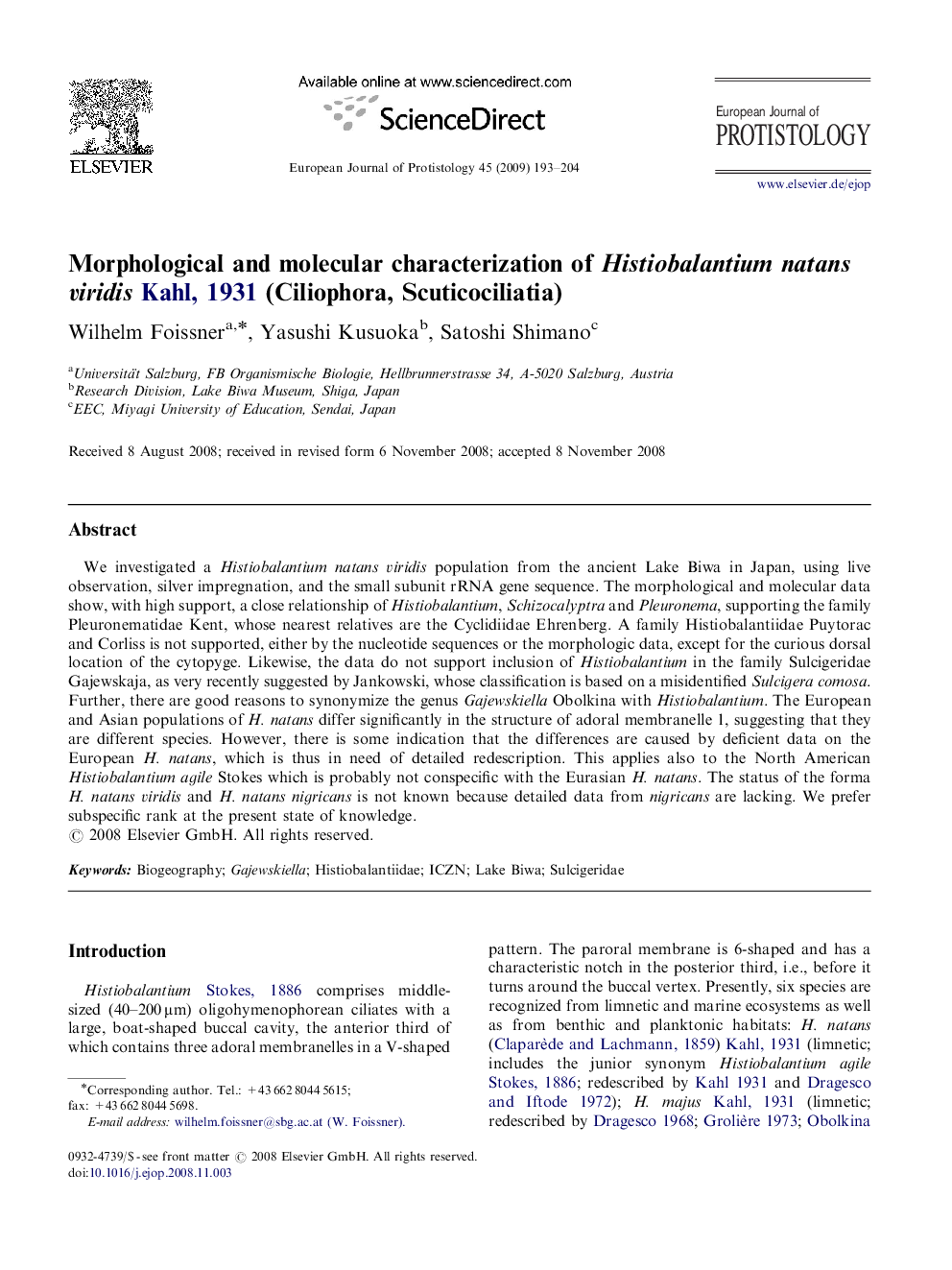| Article ID | Journal | Published Year | Pages | File Type |
|---|---|---|---|---|
| 2047135 | European Journal of Protistology | 2009 | 12 Pages |
We investigated a Histiobalantium natans viridis population from the ancient Lake Biwa in Japan, using live observation, silver impregnation, and the small subunit rRNA gene sequence. The morphological and molecular data show, with high support, a close relationship of Histiobalantium, Schizocalyptra and Pleuronema, supporting the family Pleuronematidae Kent, whose nearest relatives are the Cyclidiidae Ehrenberg. A family Histiobalantiidae Puytorac and Corliss is not supported, either by the nucleotide sequences or the morphologic data, except for the curious dorsal location of the cytopyge. Likewise, the data do not support inclusion of Histiobalantium in the family Sulcigeridae Gajewskaja, as very recently suggested by Jankowski, whose classification is based on a misidentified Sulcigera comosa. Further, there are good reasons to synonymize the genus Gajewskiella Obolkina with Histiobalantium. The European and Asian populations of H. natans differ significantly in the structure of adoral membranelle 1, suggesting that they are different species. However, there is some indication that the differences are caused by deficient data on the European H. natans, which is thus in need of detailed redescription. This applies also to the North American Histiobalantium agile Stokes which is probably not conspecific with the Eurasian H. natans. The status of the forma H. natans viridis and H. natans nigricans is not known because detailed data from nigricans are lacking. We prefer subspecific rank at the present state of knowledge.
